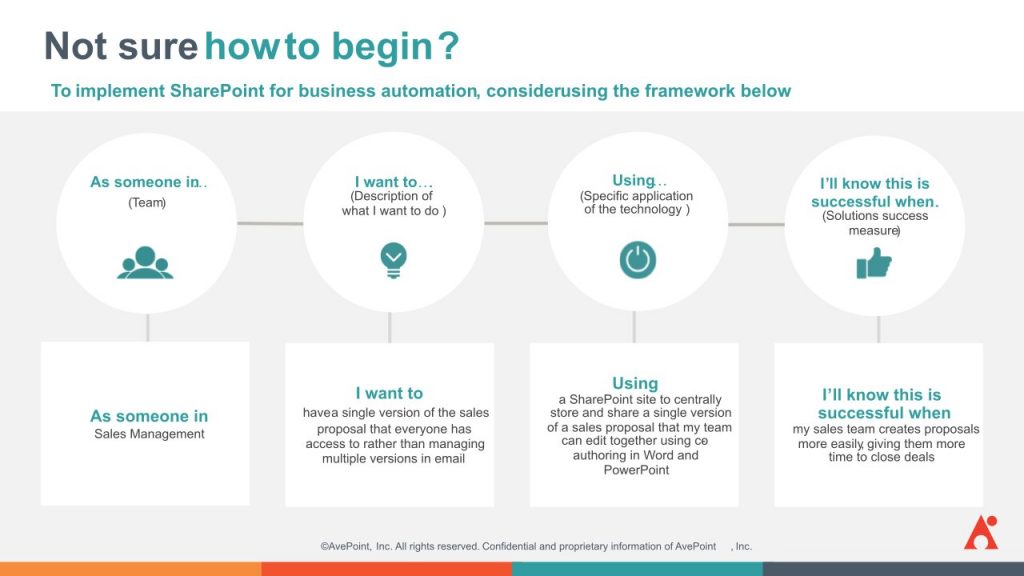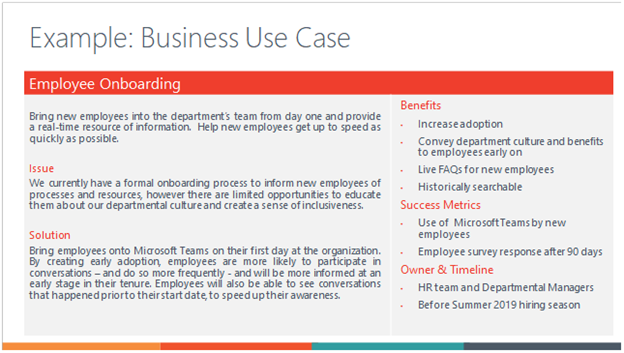Most people understand the benefits of automation, but they may not know what types of processes can be automated – or how to automate them. Business process automation with SharePoint involves the conversion of manual, paper-based processes to an electronic system that removes most of their inherent lag times, variability, and human errors.
When we look at improving a business process, we start by understanding how the process works today. To provide structure around how to approach this we would think about:
- What are their business processes?
- What role does the process in question have in the business?
- What systems do they use? (This is where SharePoint can be a great value!)
- How do we know this is successful? In other words, how do we measure improvement or adoption?
An example of the methodology for BPA improvement in SharePoint is as follows:

What State is the Business In?
You have to understand how your business currently uses SharePoint, but more importantly how a business does its day-to-day operations. What are some of their paper processes? How do they store documents? How do they keep documents? How do they find documents?
Having a central repository for collaboration to help you find and store documents easier is one of the core benefits of SharePoint. The platform can be leveraged to create better processes, automations, and workflows that are helpful for making the business more efficient. And you can extend that out to an entire mobile or remote workforce.
What is the Central Business Process?
If someone is running a contracting office, what do they do with contracts? How are those contracts created? Who are they shared with? These questions are all vital to understanding an organization’s business process. Once that process is clearly outlined, we can figure out how SharePoint can be leveraged to enhance it by giving employees secure access to documents, enabling workflows, and using tools like Power Automate and Power BI to enable automation and improve reporting, respectively.
When considering optimizing a business process, you must include key concepts such as being efficient in terms of finding content, keeping track of what that process means in terms of how relevant it is, if it should be updated, retired, improved, and so on. It’s also vital to keep track of workflow processes that involve people for input or decision points.

With SharePoint, the new process now has:
- A modern collaboration platform
- Document management (co-authoring)
- Security
- Search
- Extensibility
- Mobility
What about integrations with people, processes, or other systems? We can leverage the Power Platform.
- Power Automate
- Power Apps
- Power BI
Measurements of Success
Going back to the contracting example, let’s say a process takes six weeks to start and finish because there’s no central repository to give people access. SharePoint can be vital to providing easy external sharing. We can measure success by comparing the time it takes to enable external access without SharePoint vs. with SharePoint via metric reports.
Another type of measurable task is workflows. Whereas something may typically have to go between five different people before it’s approved, SharePoint has plenty of native workflows and approvals built-in that can be leveraged. Alternatively, if something needs to be more customized or dynamic, Power Automate can be used to ease the process.
There a few ways to measure success of the new business process in SharePoint. Digital surveys leveraging online forms, usage reports in SharePoint and Microsoft 365 on activity and trends, and ROI calculators that show things like time saved as it relates to manpower for performing tasks are a few examples. Do you have good feedback from the people leveraging these methods in SharePoint now?

Final Thoughts
Whether it’s improving a current paper process for a marketing department around campaigns or helping your Sales team deliver better proposals faster with input from various stakeholders or the Finance department centralizing reports, SharePoint can be leveraged to help businesses do more. If you’re ready to take your business to the next level of productivity, planning for and implementing SharePoint automation is a sound strategy.

